Download your PDF score!
By music teachers, for their students
| Title | Author | Set | Prices | ||
|---|---|---|---|---|---|
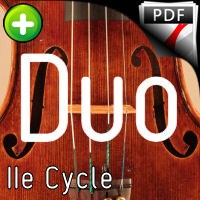
|
5 Inventions (Violin duet) |
Jean-Sébastien Bach |
Duo de Violons |
5.90€ |
|
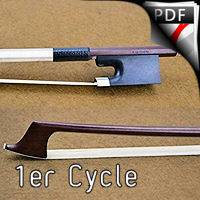
|
Orfeo Aria |
Willibald Gluck |
Duo de Violons |
5.90€ |
|

|
El Choclo |
Angel Gregorio Villoldo |
Duo Violon Violoncelle |
5.90€ |
|
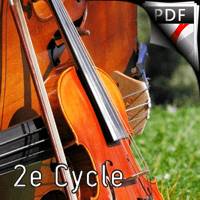
|
Queen of the Night aria |
Wolfgang Amadeus Mozart |
Duo Violon Violoncelle |
5.90€ |
|
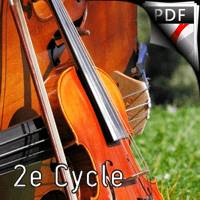
|
Minuet (Violin and Cello duet) |
Luigi Boccherini |
Duo Violon Violoncelle |
5.90€ |
|
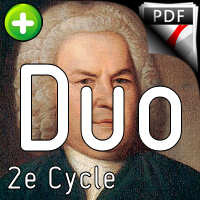
|
Prelude from The Well-Tempered Clavier |
Jean-Sébastien Bach |
Duo violon violoncelle |
5.00€ |
|

|
Nage libre |
William Sheller |
Duo Violon & Piano |
5.90€ |
|
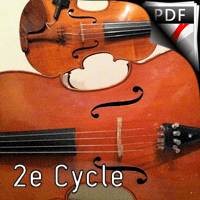
|
Waltze No. 15 |
Johannes Brahms |
Duo Violon Violoncelle |
5.90€ |
|
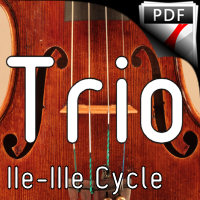
|
Largo from Symphony No. 9 (Violin Cello Trio) |
Anton Dvorak |
Trio Violons Violoncelle |
5.90€ |
|
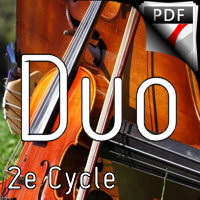
|
Hungarian Dances No 5 (Cello Violin Duo) |
Johannes Brahms |
Duo Violon Violoncelle |
5.90€ |
The violin is a wooden stringed instrument of the violin family. Most violins have a hollow wooden body. It is the smallest and sharpest instrument in the family. There are smaller instruments, including the piccolo, but they are virtually unused. The violin typically has four strings tuned in perfect fifths, and is most often played using a bow on its strings, but can also be played by plucking the strings with the fingers (pizzicato) and striking the strings with the wood side of the bow (col legno).
Violins are important instruments in a wide variety of musical genres. They are prominent in the Western classical tradition, both in ensembles (from chamber music to orchestras) and as solo instruments, and in many varieties of popular music, including country music, bluegrass music and jazz. Full-body electric violins with piezoelectric pickups are used in some forms of rock and jazz fusion music, with the pickups connected to instrument amplifiers and speakers to produce sound. In addition, the violin has come to be played in many non-Western musical cultures, including Indian and Iranian music.
The violin was first known in Italy in the 16th century, with some further modifications in the 18th and 19th centuries to give the instrument a more powerful sound and projection. In Europe, it was the basis for the development of other stringed instruments used in Western classical music, such as the viola.
Violinists and collectors are particularly fond of the fine historical instruments made by the Stradivari, Guarneri, Guadagnini and Amati families from the 16th to 18th centuries in Brescia and Cremona (Italy) and by Jacob Stainer in Austria. According to their reputation, the quality of their sound has defied all attempts to explain or match it, although this belief is disputed. A large number of instruments came from the hands of lesser-known makers, as well as an even larger number of mass-produced "commercial violins" from cottage industries in places like Saxony, Bohemia, or Mirecourt. Many of these commercial instruments were previously sold by Sears, Roebuck and Co. and other mass merchants.
The parts of a violin are usually made from different types of wood (although electric violins are not made of wood at all, as their sound does not necessarily have specific acoustic characteristics).(Although electric violins are not made of wood at all, as their sound is not necessarily derived from the specific acoustic characteristics of the instrument's construction, but rather from an electronic pickup, amplifier, and speaker). Violins can use gut strings, or other synthetic or steel strings. A person who makes or repairs violins is called a violin maker.
